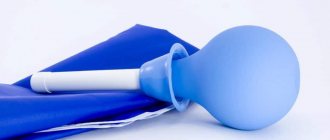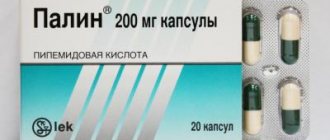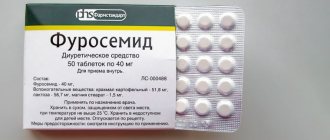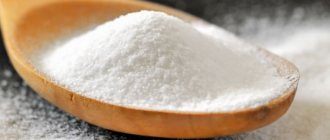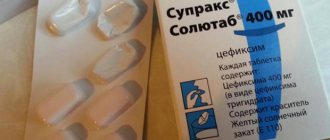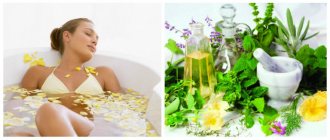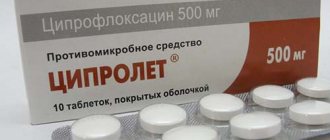Cystitis is an inflammatory disease of the human urinary system of an infectious nature. Naturally, without special antibiotics, anti-infective and anti-inflammatory drugs, treatment of this disease cannot be effective.
But very often, as a concomitant (additional) treatment, doctors prescribe thermal procedures (warming up, warm baths). What is the essence of therapeutic baths for cystitis and how do they work? Let's try to figure it out!
The advisability of warming up for cystitis
Heat has a healing effect in the treatment of many diseases. Speaking specifically about cystitis, warming procedures are designed to reduce all painful symptoms that make the process of urination unbearable.
Inflammation of the genitourinary system affects not only the organs themselves, but also significantly impairs blood circulation in their area. Constricted blood vessels slow down the outflow of blood, resulting in strong tension during urination, which causes severe pain and spasm.
Heat promotes the expansion of blood vessels, and, accordingly, has an antispasmodic effect.
In more advanced forms of cystitis, pus and blood clots form inside the bladder. Stagnation of such urine leads to the development of additional infection, which will only complicate treatment. Heat has relaxing properties, helps increase the number of bowel movements, and speeds up the removal of blood and pus.
Cystitis in women
Features of the anatomy of the female genitourinary organs increase the risk of developing inflammatory processes.
A certain percentage of pathogenic microflora is always present on the mucous membrane of the bladder. While the immune system is normal, the defense forces control their numbers. When the immune system is weakened, regardless of the method of infection, inflammatory processes intensify, including in the genitourinary organs.
A woman’s healthy body maintains the urethra in a sterile state, and even bacteria that accidentally enter here (due to the close proximity of the vagina and anus or during sexual intercourse) do not survive.
Immune disorders can cause:
- Systematic hypothermia;
- Deterioration of blood flow in the pelvis;
- Hormonal imbalance;
- Avitaminosis.
Acute “female” cystitis can be recognized by the following signs:
- Acute pain when contracting smooth muscles during urination;
- Deterioration of general health;
- Constant urge to go to the toilet due to inflammation of the mucous membrane;
- Reduced amount of urine or its complete absence;
- Increased temperature due to inflammation.
In men, the signs of cystitis are similar, the nature of the pain may vary. In children, the pain may be mild.
The chronic form is characterized by hidden symptoms with short phases of exacerbation. A long period of remission dulls vigilance and complicates the diagnosis of the disease.
The effect of medicinal baths
For therapeutic and preventive purposes of diseases of the urinary system (cystitis, cystalgia, urethritis), doctors often prescribe indifferent warming baths, which are carried out in many clinics and sanatoriums. A similar procedure can be performed for cystitis at home without much difficulty. Of course, taking such healing baths must first be agreed with your doctor.
Daily warm baths with a decoction of medicinal herbs will be very useful as an additional treatment for cystitis, as well as recovery in women.
Heat helps get rid of unpleasant symptoms, pain, burning sensation, and a decoction of herbs soothes the mucous membranes of the genital organs, has an antibacterial effect, preventing the further spread of infection.
Causes of cystitis
Today this is the most common pathology of the urinary system. Cystitis affects both women, men and children. However, women more often suffer from cystitis during active sexual activity. Also, the incidence of cystitis increases with hormonal surges. Among pregnant women, the problem of cystitis is also very relevant.
There is a simple explanation for the fact that women are more likely to get sick. Their physiology is different from men: the urethra is much shorter - and therefore the infection can easily seep there and linger in the urethra for a long time.
The most common causes of cystitis:
- promiscuity;
- low immunity;
- vaginal candidiasis and vaginitis of various etiologies;
- rare urination and improper water regime;
- chronic pyelonephritis;
- excess protein in food;
- poor nutrition - hunger strikes, malnutrition;
- period of stress and psycho-emotional stress, prolonged hypothermia.
Types of baths in the treatment of disease
A variety of warming baths are used as therapeutic therapy. It all depends on the severity of the disease and the doctor’s indications for the use of such procedures. There are the following bath options:
- Full baths . From the very name it is clear that such a bath involves complete immersion of the body in warm water. Most often, doctors recommend such a bath for cystitis caused during pregnancy or after childbirth. This is also an excellent way to carry out all genital hygiene procedures.
- Sedentary . A small amount of warm water is taken into a large and comfortable basin, to which a variety of herbal decoctions, sea salt, soda and other anti-inflammatory and antibacterial natural ingredients are added, and then they are placed in the basin. This procedure is used in cases where it is necessary to increase the frequency of urine output containing pus and blood clots.
- Foot . This type of bath is beneficial for the whole body. The feet are kept in water for up to 20 minutes, after which they are wiped dry and put on warm socks. This bath allows you to improve venous circulation of the pelvic organs.
- Steam . Scientists have long proven the positive effects of bath procedures on the human body. Doctors strongly recommend steaming in a bathhouse or sauna for diseases such as cystitis, urethritis, urolithiasis, pathology of the kidneys and adrenal glands. It is important to adhere to the basic rule - you can only visit the bathhouse at normal body temperature.
How to use
You can use water procedures for cystitis using various containers. There are full immersion in the bath, sedentary using a basin or trough, and steam. Each method has its own advantages. The optimal therapy is prescribed by the attending physician.
In the bath
To carry out treatment procedures for cystitis, you will need 200–250 liters of water for an adult. The amount of water for a child is calculated depending on the age and availability of a children's bathroom. During therapy, you should lie still, completely relaxed. The recommended water temperature is 37–37.5 degrees.
In a basin or trough
The advantage of this type of procedure is the limited volume of the container. To carry out therapy, a smaller amount of medicinal solution will be required. To take a bath with cystitis, you will need a plastic or enamel basin. The use of other material is not recommended to avoid chemical reactions with the treatment solution.
The container must be spacious enough to immerse the body in it in a sitting position up to the navel line. A solution with antiseptic properties is heated to 37–40 degrees. After diving, it is recommended to cover the pelvic area with a towel. The bath time is 15 minutes. After completing the procedure, you should dress warmly and provide rest to your body.
Basin with medicinal solution
Steam bath
To carry out the procedure, you will need an enamel bucket, basin or pan. A soft towel or toilet seat is placed on top of the container to make it comfortable to sit on. The healing effect is provided by the steam emanating from a special herbal solution. During the procedure, the body should not touch the water.
The steam bath time should not exceed 20 minutes. The temperature of the aqueous solution should be 85–90 degrees. This method of therapy is often recommended as a preventive measure after hypothermia, so that an exacerbation of chronic cystitis does not occur.
In the bath
In a basin or trough The advantage of this type of procedure is the limited volume of the container. To carry out therapy, a smaller amount of medicinal solution will be required. To take a bath with cystitis, you will need a plastic or enamel basin. The use of other material is not recommended to avoid chemical reactions with the treatment solution.
The container must be spacious enough to immerse the body in it in a sitting position up to the navel line. A solution with antiseptic properties is heated to 37–40 degrees. After diving, it is recommended to cover the pelvic area with a towel. The bath time is 15 minutes. After completing the procedure, you should dress warmly and provide rest to your body.
Steam bath
To carry out the procedure, you will need an enamel bucket, basin or pan. A soft towel or toilet seat is placed on top of the container to make it comfortable to sit on. The healing effect is provided by the steam emanating from a special herbal solution. During the procedure, the body should not touch the water.
The steam bath time should not exceed 20 minutes. The temperature of the aqueous solution should be 85–90 degrees. This method of therapy is often recommended as a preventive measure after hypothermia, so that an exacerbation of chronic cystitis does not occur.
Rules for the warming procedure
Preparing a warming bath at home is not difficult. The only point is that the bathtub should be cast iron, ceramic or, in extreme cases, ceramic-acrylic. Acrylic and metal baths do not retain heat well, so the water in them must be very hot, as it will cool very quickly, and hot water has a negative effect on the treatment of cystitis. The optimal water temperature for taking a warming bath is 38-42°.
The procedure takes about half an hour. After taking a bath, you need to wipe your body dry, put on warm, comfortable clothes and wrap yourself in a blanket so as not to cool down, otherwise the meaning of the procedure will be lost. It is very important to remain warm after therapy for as long as possible.
If, after leaving a warm warming bath, your body cools down and you feel cold, the procedure will not only not be beneficial, but may also aggravate the situation. It is best to take such a bath before bed.
Bath products
There are many products you can use to make baths.
Baking soda
The main therapeutic effect of using baths for cystitis at home containing soda is achieved due to the alkalization of the environment that comes into contact with the affected area.
The bacteria that cause inflammation of the bladder are resistant to acidic environments.
However, they cannot survive in an alkaline environment. Soda solution also has a calming effect. The recommended dose of soda per 1 liter of water is 15–20 g.
Potassium permangantsovka
These are manganese crystals that dissolve perfectly in water. When it comes into contact with the affected area, the manganese solution has an antibacterial effect. Potassium permanganate is added to the water in small quantities until the water turns dark pink.
Pharmaceutical chamomile
Chamomile is used in the treatment of many inflammatory diseases. The recipe for chamomile infusion for baths is simple. It is enough to take 100 g of dried flowers and pour 2 liters of boiling water over them. This herbal mixture is boiled for 5 minutes, after which it is filtered and added to a sitz bath.
Chamomile contains healing essential oils that have an effective effect on the body during both water and steam procedures. Chamomile has an anti-inflammatory effect.
Furacilin
This product has an antibacterial effect. It quickly stops the proliferation of bacteria that cause inflammation. To prepare the baths, take 3 furatsilin tablets per 3 liters of water.
Horsetail
The recipe for preparing horsetail is as follows: take 350 g of dry herb and pour 5 liters of boiling water over it, close the lid and let stand for a couple of hours. The infusion is added to a bath of water.
To prepare a sitz bath, it is recommended to take 8 tbsp. l. dry herbs and pour 3 liters of boiling water over them. Leave for 2 hours. The finished composition is passed through a sieve.
Pine and spruce
Decoctions based on spruce and pine plants can have a powerful antimicrobial and antiseptic effect. To make baths, you can use various parts of wood - branches, cones, pine needles. Take 10 spruce or pine cones, 2 handfuls of pine needles and put them in a 10-liter container. Fill halfway with boiling water. Cook over low heat for half an hour, then remove from the stove and let stand for a while. Strain the finished broth and add it to the water.
Pharmacy fees
The advantage of using herbs is that the effect of herbs is enhanced.
Urological collection can be purchased at the pharmacy. Here are the most popular pharmacy fees:
- Brusniver. It contains St. John's wort, lingonberry, string and rosehip.
- Leros. It contains parsley root, nettle, bearberry and yarrow.
- Cystophyte. It is made from lingonberry leaves, parsley and eleutherococcus.
To prepare baths based on the fees, take 2 tbsp. l. collection per 1 liter of water. The finished decoction is added to the bath.
Bay leaf
A procedure based on bay leaves has a very good effect. To prepare it, you need to take 30 g of bay leaf and fill it with 10 liters of water. This composition is boiled for 10 minutes.
Tea tree and bergamot oil
Approximately 6 drops of tea tree and bergamot oils should be added to warm water. You should bask in such a bath at least once a day. It can be done more often. Regular use of baths based on essential oils will prevent the frequent occurrence of cystitis.
Sea salt
It can be used for full and foot bath procedures. You need to fill the bath one third with water and add 200–300 g of sea salt to the water. The salt composition should not be hotter than 39 degrees. The procedure takes 15 minutes. It should be used if there are no scratches or wounds on the skin.
You can also use salt for foot baths. The water temperature should be 36–38 degrees.
Turpentine
Fill the bathtub 1/2 full with water. Pour the turpentine composition into the vessel and dilute it with water, stir. Pour the mixture into water and distribute it evenly. Sit in this bath for 5–20 minutes.
To prepare baths, you can take other components, for example, water tincture of propolis.
Cystitis can appear in both an adult woman and a young girl. Sometimes the disease develops in children. Baths based on the above remedies will help quickly eliminate pain. It is especially advisable to carry out baths for cystitis in children. After all, not all young patients tolerate drug therapy well.
How and with what do you make baths for cystitis?
When preparing a medicinal bath for the treatment of cystitis, it is very important to calculate the proportions of all ingredients based on the size of the person. Such baths can be prepared using various medicinal herbs for cystitis and other natural ingredients:
- Bath with chamomile . The basis of such a bath is a chamomile decoction, for the preparation of which you will need 0.5 kg of dry plant color and 3 liters of water. Boil the decoction for about 40 minutes, then let it brew for 3 - 4 hours and filter. The heated broth is added directly to the water. Chamomile has excellent calming, analgesic and anti-inflammatory properties.
- Soda bath . Soda for cystitis is used in cases where the infection has spread beyond the bladder and began to affect the urinary tract. Soda maintains the acid-base balance of the mucous membranes, creating an environment unfavorable for the development of infection. A solution of soda for the bath is prepared at the rate of one teaspoon per 2 liters of water.
- Herbal baths for cystitis . For such baths, a collection of several herbs is used. An excellent combination would be echinacea, celandine and horsetail. All herbs are taken in equal proportions and a decoction is prepared from them, which is added to the bath. For a sitz bath, prepare a decoction of 6 tablespoons of these herbs and 5 liters of water.
- Bath with potassium permanganate . Manganese has excellent antibacterial, antiseptic and astringent properties, perfectly heals wounds and restores mucous tissue. The solution is prepared with medium strength, bright pink color, and added to the bath.
- Furacilin . If cystitis is complicated by purulent discharge, wash baths based on furatsilin solution are used. It is sold in pharmacies, ready for use. One bottle (200 ml) of the drug is enough for one bath.
What products are most popular?
The effects of the bath can be very different depending on what products are used as an additive:
- Antimicrobial - or antibacterial. For this purpose, not herbal decoctions are used, but solutions of certain substances, for example, potassium permanganate, furatsilin. These are well-known antiseptics widely used in medicine. The concentration of such solutions is very small, but this is enough to actively suppress pathogenic microflora. In addition, unlike more advanced antimicrobial drugs used orally, addiction to furatsilin or potassium permanganate is not observed.
- Alkaline - ordinary baking soda is used for such purposes. The fact is that all bacteria that cause inflammation of the genitourinary organs multiply in an acidic environment and die in an alkaline environment. An alkaline bath with soda successfully suppresses the activity of pathogenic bacteria, as it changes the acidity of the environment. In addition, baking soda relieves irritation and pain.
- Anti-inflammatory - in this case, a variety of herbal preparations are used. The effect is ensured by the active biological components included in their composition. For example, tannins form a protective film on the surface of inflamed tissues, which prevents irritation. Phytoncides reduce the activity of bacteria and prevent them from multiplying. Glycosides and flavonoids suppress the production of inflammatory mediators, thereby relieving swelling and reducing fever.
- Diuretics – herbs with this effect facilitate the flow of urine, even if the bladder is inflamed. Well, restoring the functions of the bladder immediately leads to an improvement in its condition. To enhance the effect of such baths, you need to include more liquid in your diet and take decoctions of diuretic herbs internally.
- Soothing - in demand for irritation and itching, which often accompanies cystitis. The most famous option is chamomile infusion, which has a general calming and anti-inflammatory effect.
- Choleretic - inflammation of the bladder is often caused by intestinal disorder. Well, to normalize it, it is necessary to strengthen the secretory function of the liver so that more bile enters the duodenum. Preparations for internal use, of course, are stronger, but such a dramatic effect for the treatment of cystitis is excessive. But a bath with a choleretic agent will help restore intestinal function and relieve inflammation of the pelvic organs.
Contraindications for water procedures
Of course, warming healing baths for cystitis enhance the effectiveness of drug treatment and promote rapid recovery. But there are still a number of contraindications when you should refrain from such procedures:
- Incontinence. If one of the symptoms of cystitis is uncontrolled urination, such a bath will only worsen the situation. The heat relaxes the muscle tissue and the person completely loses control of the sphincter, resulting in the bladder emptying involuntarily.
- At elevated body temperatures, warming water procedures are strictly contraindicated. They will lead to active blood clotting, which will cause severe pain.
- If you have already taken a bath and the pain during urination for unknown reasons only intensifies, you should stop therapy.
Water procedures are strictly prohibited for people who have tumors in the small pelvis. If the body overheats, tumor growth will intensify and this can lead to serious consequences.
Warnings and Side Effects
For cystitis and urethritis, warming baths are highly effective. However, only the attending physician can prescribe them. The same applies to douching in women with cystitis. A complication of the disease is the development of inflammation of the upper urinary canals, as well as the kidneys.
The infection, together with the liquid from the syringe, enters the uterine cavity much faster than with the natural development of the pathology. While taking baths, it is also possible for pathogenic bacteria to penetrate through the bladder into the kidneys. But if all conditions and doctor’s recommendations are met, the benefits of this procedure will set the body up for recovery.
Children at an early age are allowed to take baths for inflammation of the bladder and genitals. However, the temperature regime should be observed, and individual intolerance to the components of medicinal solutions should be excluded.
Treatment of cystitis with soda
IT IS IMPORTANT TO KNOW! The only remedy for CYSTITIS and its prevention, recommended by our subscribers! Read more…
The healing properties of baking soda have been known for a long time, and the effectiveness of its use for medicinal purposes has been confirmed not only by traditional healers, but also by medical research. Sodium bicarbonate is also valuable because it is absolutely harmless to the human body, since many recipes contain this particular element.
Have you been fighting CYSTITIS for many years without success?
Head of the Institute: “You will be amazed at how easy it is to cure cystitis by taking it every day...
Read more "
Application
The high effectiveness of using soda solutions and lotions at home is equally applicable both for external and internal use. This chemical composition helps with diseases of the mouth, throat, and gynecological diseases. There are secret sources proving that sodium bicarbonate can even eliminate cancer. In the treatment of therapeutic diseases, baking soda is effective as first aid for cystitis. It is also indispensable for women during various cosmetic procedures. Sodium bicarbonate has many unique properties:
- antiseptic;
- relieving skin irritation;
- anti-inflammatory and many others.
For cystitis
Cystitis in women is an inflammatory process of the bladder and urinary tract. It has many etiologies and its various forms are treated with different drugs. But regardless of what source of inflammation is the provocateur, first aid for cystitis is baking soda, which is available in the household of all women. Often, a relapse of the disease takes the fair half of humanity by surprise at the most inopportune moments of their lives, so relieving pain symptoms before visiting the pharmacy or visiting the attending physician is the primary action of sufferers. Quick effectiveness in relieving pain at home is achieved with ordinary soda. There are a lot of soda-based recipes, which not only helps reduce the pain of the disease, but also speeds up the treatment of cystitis in general.
The specificity of cystitis as an inflammatory process involves the development of bacteria in an acidic environment, and alkaline baking soda destroys this acidity, thereby blocking the proliferation of infectious cells. In addition, the presence of pathogenic flora is quite effectively disinfected with soda solution. All this proves the importance of using soda in a comprehensive form.
Types of reception
The most popular remedy for internal use is a soda solution: 1 tablespoon of soda should be diluted in a liter of boiled water and mixed thoroughly. Take this infusion three times a day, 1 spoon. Potassium salts found in sodium bicarbonate change the pH of urine, which has a beneficial effect on the microenvironment of the bladder and accelerates the treatment of inflammation.
Douching and washing a woman's external genitalia can also be done with a weak solution of baking soda according to the above recipe. The female body is susceptible to frequent cystitis precisely because of the close proximity of the urethra and genitals, so it is obvious that it is the restoration of the balance of the flora of the genital organs that effectively helps speed up the process of overall recovery. You need to wash yourself with soda warm; when douching, you should hold the solution inside the vagina for 20–40 seconds. This method of fighting the disease not only has a good effect on the walls and flora of the genital organs, but also prevents the development of such negative consequences as a tumor in its various etiologies.
Considering that the treatment of cystitis in women is based on three main pillars, soda is able to cope with all the principles of therapeutic measures.
- Getting rid of an infection in the bladder is a stage of enhanced “expulsion” of bacteria by drinking plenty of fluids. During this period, first aid for cystitis is a soda solution. Taken internally regularly, it will enhance the quality of the fight against any type of inflammatory infection. In parallel with sodium bicarbonate, it is recommended to take herbal remedies with anti-inflammatory and diuretic effects, as well as cranberry juice.
- Antibiotics successfully combat the death of bacteria that are the source of the disease. In this case, soda, by oxidizing the urine, helps eliminate the environment that is beneficial for them, which increases the effectiveness of medications in the area of the appearance of new bacteria.
- Relief of pain can occur without the help of antispasmodics, if treatment with soda solution began in a timely manner. In addition, baking soda works quite effectively when paired with medications, so painkillers do not interfere with sodium bicarbonate in alleviating suffering during exacerbation of cystitis in women.
Conclusion
Cystitis is a rather painful disease due to painful symptoms and frequent urge to visit the toilet. Therefore, it is not surprising that women try to cope with it quickly and at home, because in modern life there is not always time to visit a doctor, and monetary income leaves much to be desired. Soda in relation to cystitis is an effective and harmless drug, which is also affordable for everyone, but you should not recklessly follow the advice of friends or articles found on the Internet. It is better to take care of your health by seeking help from medical specialists who will prescribe individual treatment and advise on the correct use of folk remedies.
By secret
- Incredible... Chronic cystitis can be cured forever!
- This time.
- Without taking antibiotics!
- That's two.
- During the week!
- That's three.
Follow the link and find out how our subscribers do it!
×
